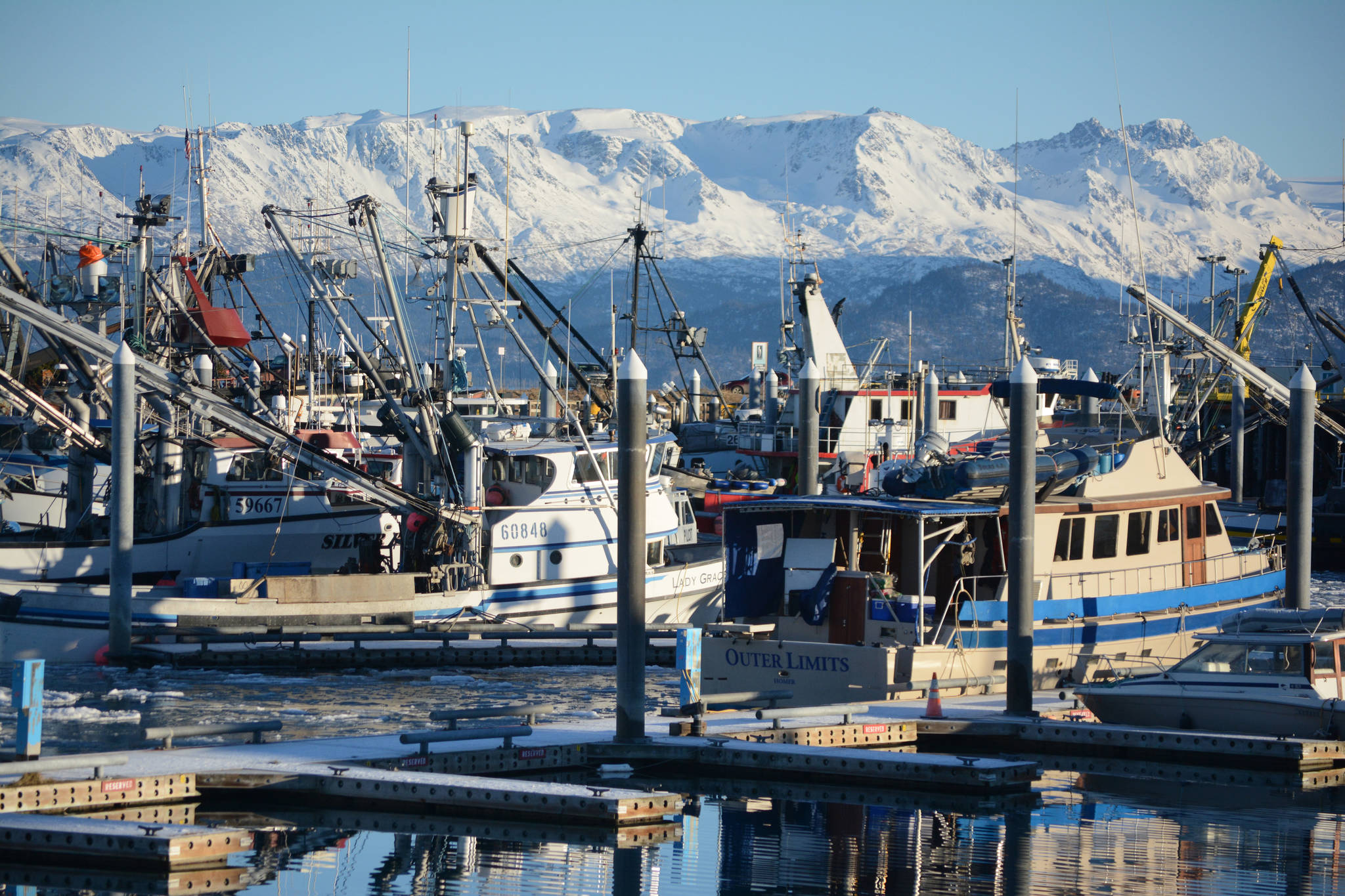The U.S. Coast Guard is in the news a lot this week, from a scathing report from federal regulatory agencies pointing to gaps in safety regulations that potentially led to the deaths of 34 people on a dive boat off of Santa Barbara in southern California, to harrowing medevacs from Cold Bay and Unalaska, to the grounding of a tug that is leaking fuel at a critical time in the Sitka Sound herring harvest.
The L.A. Times reports that the National Transportation Safety Board harshly criticized the U.S. Coast Guard for failing to heed years of boat safety recommendations, saying more aggressive action from lessons learned in previous incidents could have prevented the 2019 boat fire aboard the dive boat Conception anchored off the Channel Islands that killed 34 people.
Jennifer Homendy, chairwoman of the NTSB told a congressional hearing, “Since 1999, we’ve investigated three accidents involving passenger ferries in New York, a deadly fire on the small passenger vessel Island Lady in Florida and duck boat accidents in Arkansas, Pennsylvania and Missouri. Including the Conception, a total of 86 people died in these tragedies. Eighty-six lives were lost unnecessarily. Eighty-six people who have left behind bereaved families and friends. That’s a lot of lives impacted.”
She alleged that after each disaster, the NTSB issued multiple recommendations to the U.S. Coast Guard to close safety gaps, yet many remain unfulfilled. She said it should not take an act of Congress, as it did in the wake of the Conception disaster, to get reforms.
Coast Guard officials defended their response to the boat incidents, saying the agency had to balance the NTSB’s recommendations with the economic effects on the maritime industry. They also said boat operators and owners had a responsibility for creating a culture of safety.
The Times reports that on March 28, the Coast Guard will implement interim fire safety rules for small boats requiring fire detection systems, proper dual escape routes and emergency escape drills. Congress mandated those provisions in December 2020 as part of the Elijah E. Cummings Coast Guard Authorization Act.
Even with those changes, Homendy said, safety gaps persist.
“There are currently 19 open NTSB recommendations regarding small passenger vessels. One of those recommendations would require operators to implement a preventative maintenance program,” she said. “We issued it 20 years ago; another would require operators to implement a safety management system, which we also issued 20 years ago. We reiterated that in 2012, again in 2018 and again in 2020 following numerous tragedies.”
Meanwhile, the Coast Guard in Alaska has been busy providing medevacs, from a 62-year-old worker on the 254-foot processor Phoenix about 50 miles north of Cold Bay in 10-foot seas and wind at 35 knots gusting to 40 knots, to waiting five days to fly a C-130 into Unalaska to ferry out five critically ill patients after weather kept the airport closed.
KBUC Public Radio in Unalaska reported that the emergencies ran the gamut of critically ill patients last week, from possible appendicitis to a pregnant patient and a boat injury. And while staff had been trying to get at least two of them off island since last Wednesday, high winds and stormy weather stopped air travel.
“In truth, it wasn’t that unique of a situation, except the weather compounded what we deal with on a daily basis,” said Jennifer Heller, interim director of operations and a certified nurse midwife at the island’s Iliuliuk Family and Health Services clinic.
“It’s been a busy few days for the Alex Haley crew and their embarked aircrew,” Master Chief Petty Officer Christopher Cole of the Coast Guard command center in Juneau said of the medevacs. “They had two medevacs in four days and were essential in getting these individuals to a higher level of care.”
The Coast Guard is also dealing with a tug that ran aground in Neva Strait north of Sitka, where commercial and subsistence herring fisheries are taking place.
The tug, Western Mariner, is leaking fuel, and although boom has been deployed and the Department of Environmental Conservation and the Coast Guard have said that no more fuel is escaping, it is not known how much fuel has already escaped. The tug, which collided with the barge it was towing due to steering problems and was pushed ashore, carries 45,000 gallons of diesel. About 1,200 gallons had been recovered by skimmers and 5,000 gallons had been pumped out of the boat.
Alaska Department of Fish and Game managers have “shifted the focus” of the commercial fishery from Krestof Sound where the fuel is concentrated, and where large schools of herring spawn, according to KCAW Public Broadcasting, but the subsistence fishery is not as mobile, relying on hemlock branches suspended in the water rather than scooping fish up with a net in whatever area is open.
The subsistence harvest generally opens later in the season since it relies on spawning herring and not trying to harvest them right before they spawn.
Andrew Roberts told KCAW that he has been harvesting subsistence herring spawn since the early 1980s, and said he is “very concerned” about the oil sheen.
“It’s almost like a worst-case scenario of the catastrophic spill like this … during the time when the precious herring are expected to spawn,” he said.
He says in all the years he’s harvested, he’s never seen a fuel spill this big or this close to spawning grounds.
Cristy Fry can be reached at realist468@gmail.com



